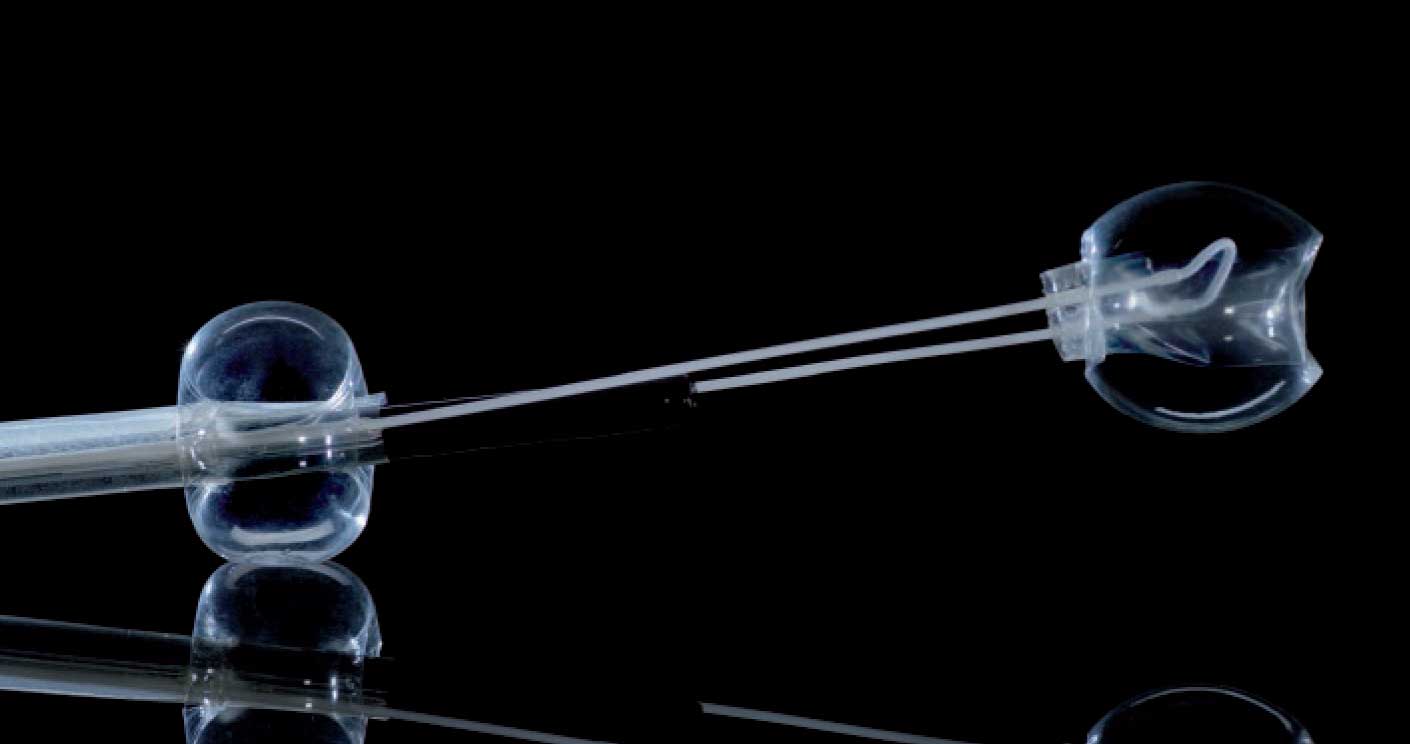What is the DiLumen Endoluminal Interventional Platform (EIP)?
The DiLumen EIP is a disposable dual-balloon endoscopic accessory that enhances endoscope functionality. One form of its design (the DiLumen EZ Glide) consists of a flexible sheath with two expandable balloons: one aft balloon that is firmly attached to the proximal end of the device near the scope tip, and one fore balloon that can be advanced and retracted by pushrods.
What is DiLumen EIP used for?
When used as instructed, DiLumen ensures the complete positioning of an endoscope in the large intestine and assists with optical visualization, diagnosis, and endoscopic treatment. An endoscopic approach to treatment in the colon may preserve anatomy, eliminate complications associated with colectomy, and reduce costs.
How does DiLumen work?
The balloons and sheath assist advancement of the endoscope (and endoscopic suturing devices) through the colon, supplying multidirectional dynamic retraction and improving scope stability during colonic EMR and ESD. The platform allows clinicians to flatten folds in the large intestine and expose lesions, which aids diagnoses and treatments. DiLumen also enhances visualization, endoscope stabilization, insufflation, and tissue manipulation.
Where can I download the Instructions for Use (IFU) for DiLumen?
Download them here: Instructions for use
Where can I download relevant DiLumen product specifications?
DiLumen EZ Glide is a non-sterile single-use device with a shelf life of 24 months.
Download Product Specification Sheet
What are the indications for DiLumen?
The DiLumen platform is intended for use with any standard endoscope (typical size: distal tip outer diameter 12.5–14.3 mm, working length 1680 mm or greater). The device is indicated to ensure complete positioning of an endoscope in the large intestine and assist with optical visualization, diagnosis, and endoscopic treatment.
What is the therapeutic zone (TZ)?
When the fore and aft balloons are inflated, the area between the balloons is stabilized, creating the TZ. The balloons assist with accessing and visualizing lesions behind folds and turns in the large intestine, stabilizing the endoscope’s distal tip and allowing localized insufflationwithin the TZ.

What is endoluminal therapeutic treatment?
Endoluminal therapeutic treatment is performed in a hollow organ using typical techniques such as retraction, dissection, and tissue apposition (clipping or stapling) under endoscopic control. In the gastrointestinal tract, this treatment is performed through natural orifices and involves an endoscope as well as small therapy devices (such as needles and electrocautery) to lift, dissect,
and remove tissue and control bleeding.
The duration of an endoluminal procedure may vary from one to several hours. General anesthesia may or may not be necessary depending on the complexity of the procedure and the clinician’s preference. Insulation with gas is also used to inflate the bowel and improve visualization.
How is endoluminal therapeutic treatment different from laparoscopic surgery?
Laparoscopic surgery requires the use of general anesthesia and small incisions to access the abdominal cavity. Though the risk of complications is lower and recovery time is shorter than for open surgery, laparoscopic surgery may still require an extended hospital stay and a long recovery. This is especially the case with colorectal surgery.
Endoluminal therapeutic treatment is performed through a natural orifice (such as the anus) and takes place entirely within the lumen of the intestine. The removal of diseased tissue occurs without abdominal incisions, which reduces patient recovery time.
Which specialties are trained to perform endoluminal therapy?
Typically, advanced endoscopists and gastrointestinal and colorectal surgeons with flexible endoscopy experience are trained in these procedures.
How many endoluminal therapeutic procedures are performed annually in the US and worldwide?
Hundreds of thousands of these procedures are performed each year. In some countries (e.g., Japan), endoluminal therapeutic procedures are considered the gold standard.